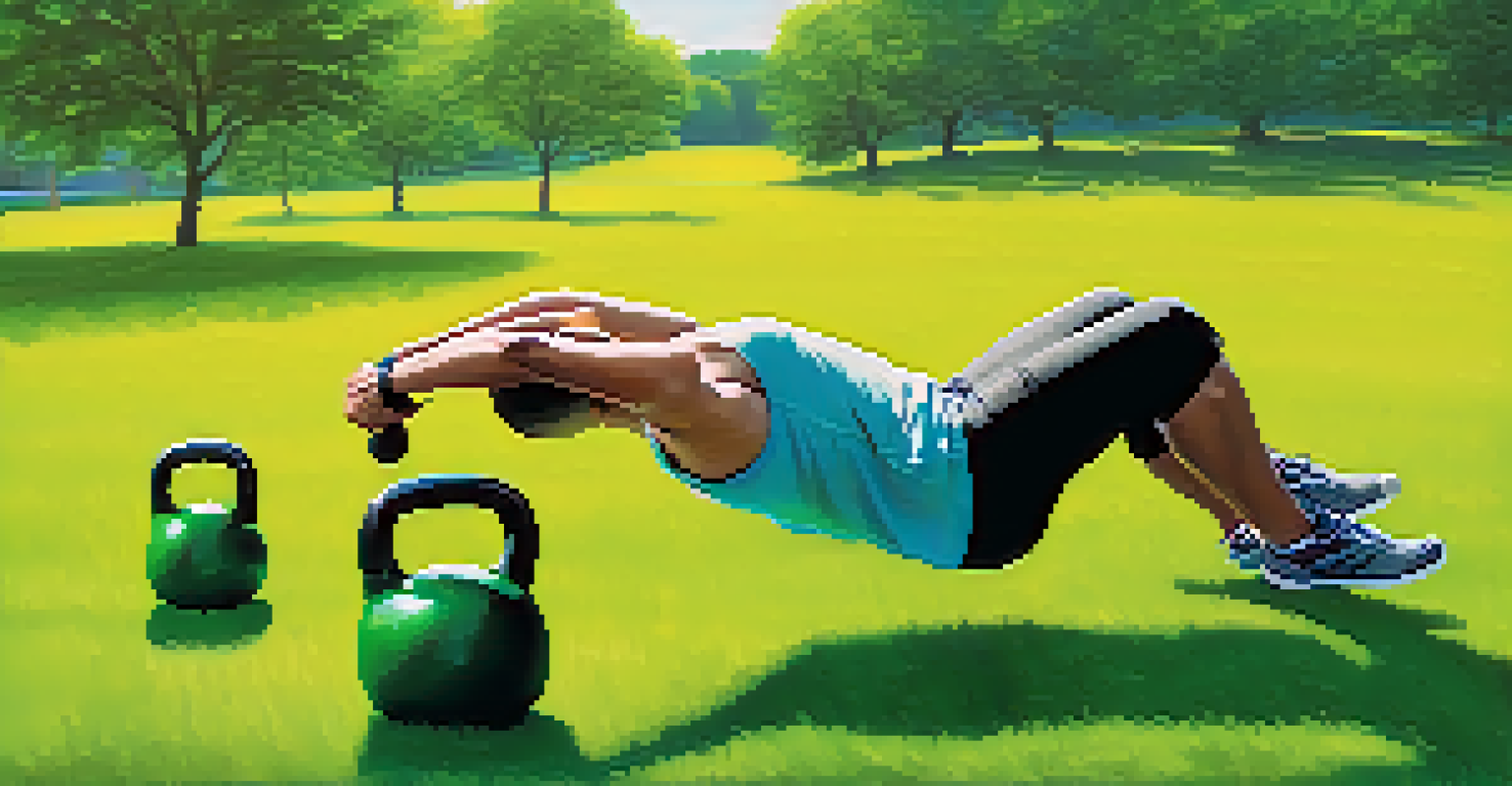Advanced Core Training Techniques for Stability and Strength

Understanding the Core: More Than Just Abs
When we think of core training, many picture chiseled abs. However, the core is much more than just the front of your abdomen. It includes the muscles around your pelvis, lower back, hips, and even upper body. This entire area plays a crucial role in maintaining stability and strength during physical activities.
The core is the foundation for all movement and is integral to achieving better performance in sports and everyday activities.
A strong core supports your overall body posture and enhances your movement efficiency. It helps in transferring energy between the upper and lower body, which is essential for athletic performance. In essence, your core acts as a powerhouse that stabilizes your body during various movements.
By understanding the broader role of the core, we can tailor our training techniques to target these muscles effectively. This holistic approach not only improves strength but also reduces the risk of injury, making it a fundamental aspect of any fitness regimen.
Incorporating Anti-Rotation Exercises for Stability
Anti-rotation exercises are fantastic for developing core stability, as they require you to resist rotational movements. Think of moves like the Pallof press or the anti-rotation plank. By engaging your core to prevent rotation, you effectively build strength in the muscles that stabilize your spine.

These exercises are particularly beneficial for athletes or anyone involved in sports that require sudden changes in direction. For instance, a golfer benefits from anti-rotation exercises to maintain a stable base while swinging. This stability translates to improved performance and reduced injury risk.
Core Training: More Than Abs
A strong core includes muscles around the pelvis, lower back, and hips, crucial for stability and athletic performance.
Incorporating these exercises into your routine can be as simple as adding them to your warm-up or cool-down. Aim for two to three sets of 8-12 repetitions, focusing on form over quantity to maximize the benefits.
The Power of Weighted Core Exercises
Weighted core exercises, such as weighted planks or medicine ball twists, significantly enhance core strength. By adding resistance, you challenge your muscles to work harder, promoting growth and endurance. This approach is particularly effective for those looking to take their core training to the next level.
Strengthening your core is not just about aesthetics; it's about improving your overall functional fitness and stability.
For example, performing a side plank with a weight plate can intensify the workout, targeting the obliques more effectively. Similarly, incorporating kettlebells into your routine can provide a full-body challenge while focusing on core stability. It's like inviting your core to a strength party with weights as the special guests!
Start with lighter weights to ensure proper form, gradually increasing the load as your strength improves. This progression allows for safe and effective development of your core muscles.
Dynamic Movements: Engaging the Core in Action
Dynamic movements, such as kettlebell swings or medicine ball slams, are excellent for engaging the core while incorporating full-body movement. These exercises not only build strength but also improve coordination and cardiovascular fitness. Think of your core as the central hub that connects all the moving parts of your body.
For instance, during a kettlebell swing, your core stabilizes your body as you generate power from your hips. This kind of training mimics real-life activities, making it functional and applicable to daily tasks or sports. It's like giving your core a real-world test drive!
Incorporate Anti-Rotation Exercises
Exercises like the Pallof press build core stability by training your body to resist rotational movements.
Incorporate dynamic movements into your workouts by focusing on a few key exercises. Aim for 3-4 sets of 10-15 repetitions, ensuring each movement is controlled and intentional to maximize core engagement.
Balance Training: Enhancing Core Stability
Balance training is a crucial component of advanced core training, as it challenges your stability and engages multiple core muscles simultaneously. Exercises like single-leg deadlifts or stability ball rollouts force your body to maintain balance, which directly involves your core.
This type of training is not just for athletes; it benefits everyone by improving overall body control and reducing the risk of falls, especially in older adults. Imagine walking on a tightrope; that’s your core working hard to keep you steady and upright!
Incorporate balance exercises into your routine at least once a week. Start with basic movements and gradually increase the challenge by closing your eyes or using unstable surfaces like balance boards.
Pilates and Yoga: Core Strength Through Flexibility
Both Pilates and yoga emphasize core strength through flexibility and control. These practices focus on the mind-body connection, allowing you to engage your core while developing balance and flexibility. For instance, Pilates often includes exercises that require precise movements and core engagement, promoting overall stability.
Yoga, on the other hand, incorporates poses that challenge your core while enhancing balance and flexibility. Think of poses like the plank or boat pose, where your core is activated to maintain form. It’s like a dance for your body, where every movement is intentional and fluid!
Recovery Enhances Core Effectiveness
Incorporating recovery and mobility practices is essential for optimal core function and overall workout performance.
Integrating Pilates or yoga into your routine can provide a refreshing break from traditional workouts. Aim for one to two sessions a week to experience the benefits of a strong, flexible core.
Recovery and Mobility: Key to Core Training Success
Recovery and mobility work are often overlooked but are essential for effective core training. Stretching and foam rolling can help alleviate muscle tension, allowing your core to function optimally. Think of recovery as giving your core a chance to recharge after a hard workout, just like recharging your phone after a long day of use.
Incorporating mobility exercises, such as dynamic stretches or yoga flows, can enhance your range of motion and prevent stiffness. This is particularly important since a flexible core can better handle the demands of strength training. It’s all about keeping your core happy and healthy!

Aim to dedicate at least one session a week to recovery and mobility. This not only aids in performance but also boosts your overall workout effectiveness, making your training more sustainable in the long run.